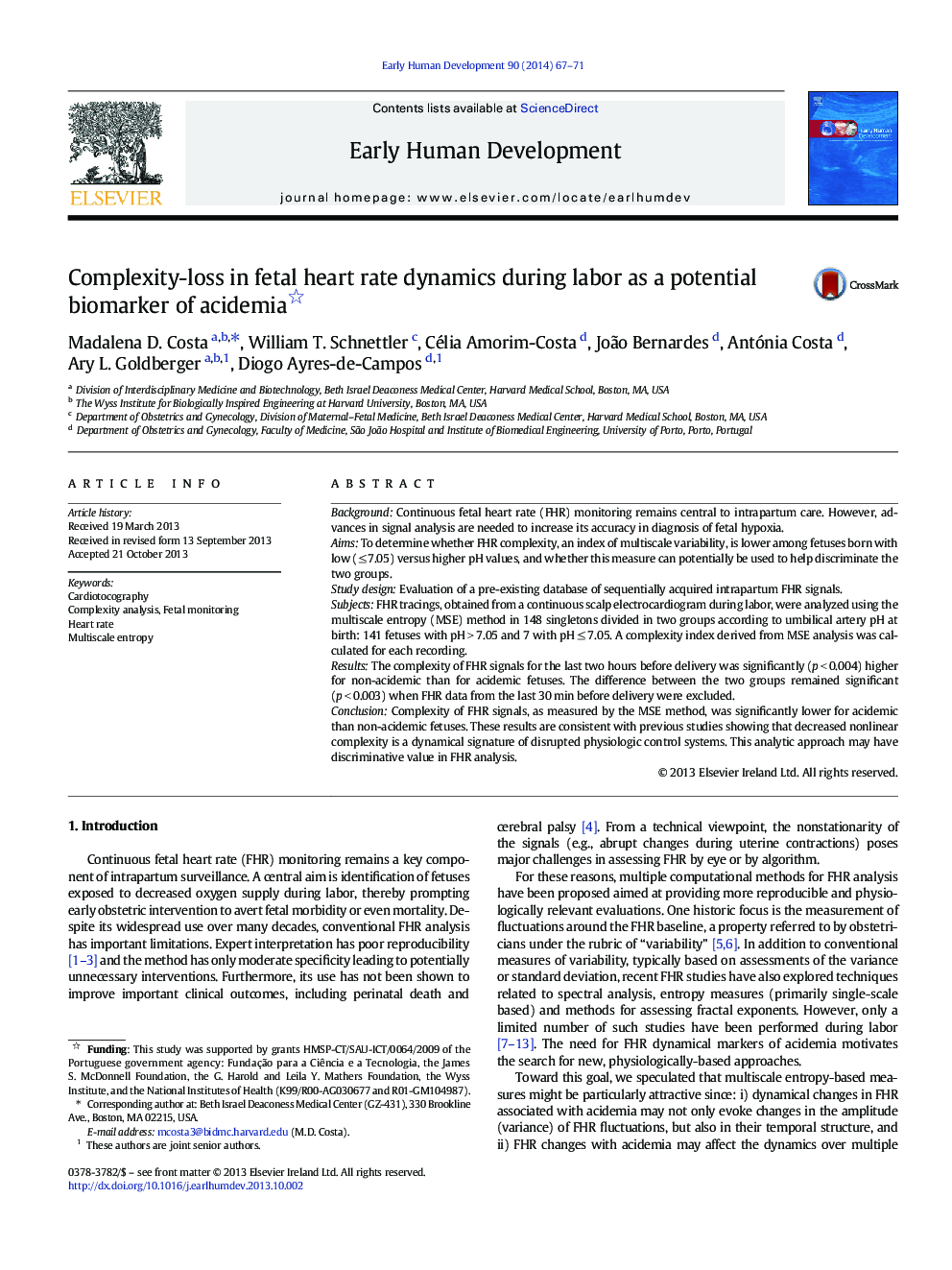| Article ID | Journal | Published Year | Pages | File Type |
|---|---|---|---|---|
| 3918083 | Early Human Development | 2014 | 5 Pages |
BackgroundContinuous fetal heart rate (FHR) monitoring remains central to intrapartum care. However, advances in signal analysis are needed to increase its accuracy in diagnosis of fetal hypoxia.AimsTo determine whether FHR complexity, an index of multiscale variability, is lower among fetuses born with low (≤ 7.05) versus higher pH values, and whether this measure can potentially be used to help discriminate the two groups.Study designEvaluation of a pre-existing database of sequentially acquired intrapartum FHR signals.SubjectsFHR tracings, obtained from a continuous scalp electrocardiogram during labor, were analyzed using the multiscale entropy (MSE) method in 148 singletons divided in two groups according to umbilical artery pH at birth: 141 fetuses with pH > 7.05 and 7 with pH ≤ 7.05. A complexity index derived from MSE analysis was calculated for each recording.ResultsThe complexity of FHR signals for the last two hours before delivery was significantly (p < 0.004) higher for non-acidemic than for acidemic fetuses. The difference between the two groups remained significant (p < 0.003) when FHR data from the last 30 min before delivery were excluded.ConclusionComplexity of FHR signals, as measured by the MSE method, was significantly lower for acidemic than non-acidemic fetuses. These results are consistent with previous studies showing that decreased nonlinear complexity is a dynamical signature of disrupted physiologic control systems. This analytic approach may have discriminative value in FHR analysis.
